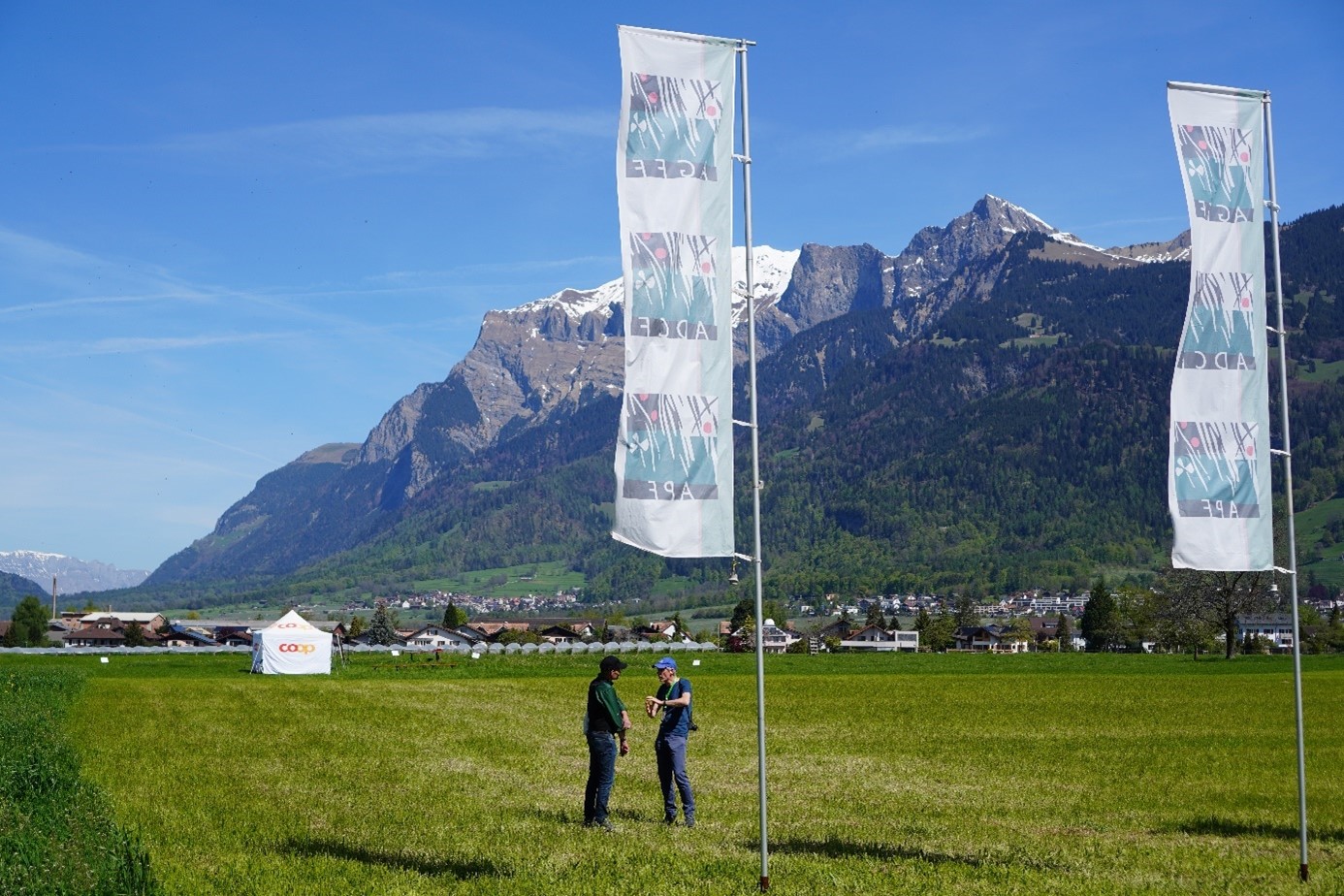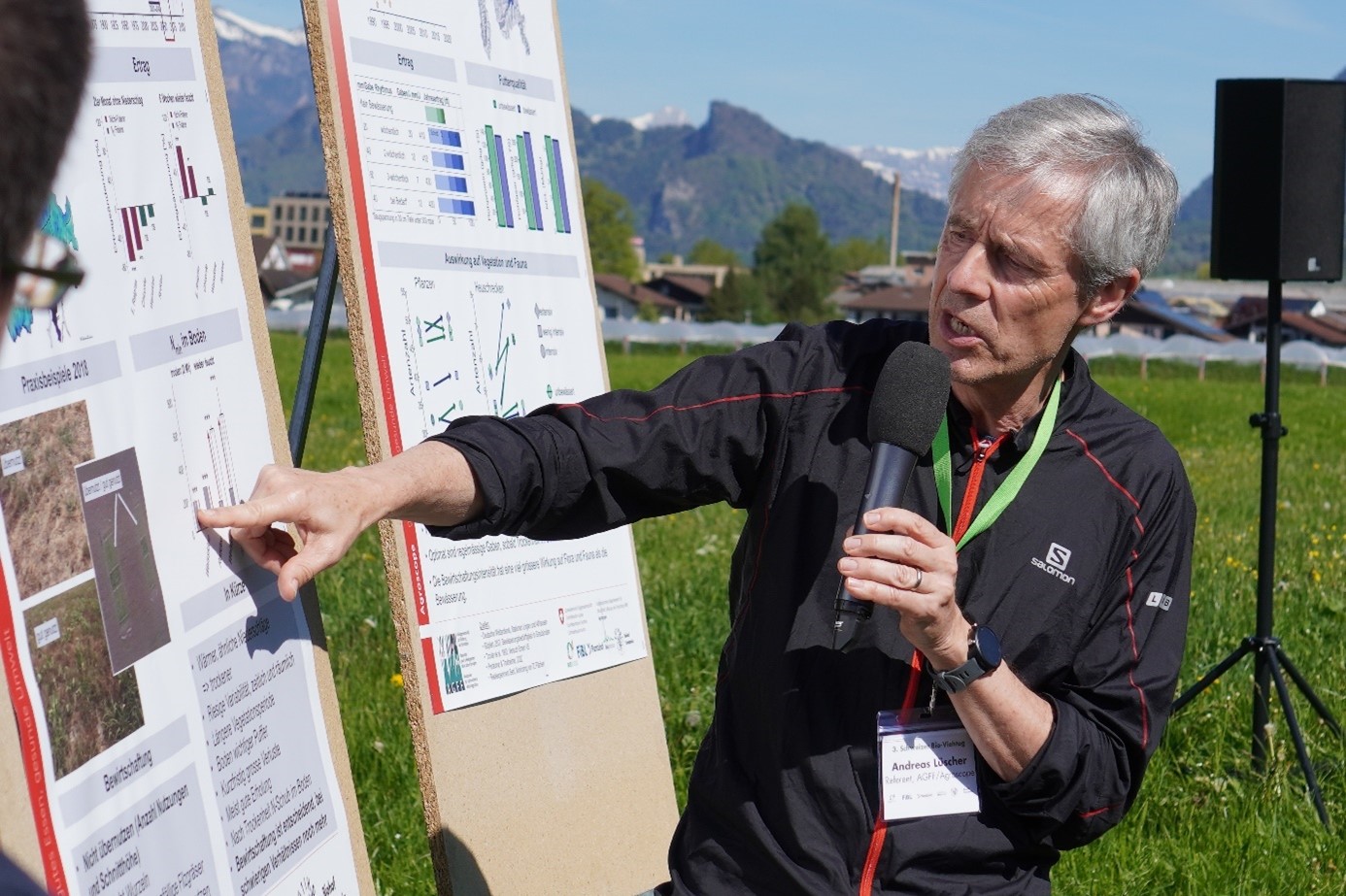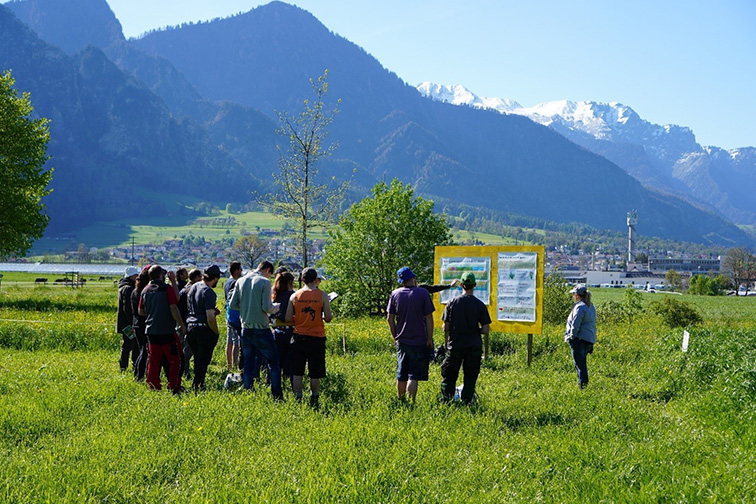Bio Suisse, the umbrella organisation of Swiss organic farmers, organised the National Organic Livestock Day (Plantahof Bioviehtag) on May 4 together with the Research Institute of Organic Agriculture (FiBL) and the regional agricultural school and extension centre Plantahof. The focus of this annual event was organic animal husbandry.
About 450 visitors from all four language regions of Switzerland were welcomed in Landquart (Grisons). The event took place on three host farms: Plantahof, Rütihof and Biohof Campania. Innovative practitioners, experts and researchers presented new solutions to existing challenges at 16 thematic posts on animal husbandry systems.

Region of Plantahof (credits Florian Schmid, Agroscope)
Forage production under drought stress
Forage production as the basis of system with ruminants was a central theme of the field day. Forage production is "systemically relevant" to organic agriculture in the host canton and in whole Switzerland, but is severely threatened by climate change, especially by the increasing frequency and severity of drought periods. Already in recent years, farmers have been faced with spring and summer droughts, resulting in a lack of forage during summer. On the other hand, farmers could profit from an extended growing season in spring and fall. Permanent grasslands were subject to these fluctuations, and maintaining valuable grasses proved to be a challenge for them.

Andreas Lüscher (AGFF & Agroscope) presenting results of drought stress on permanent grasslands (credits Florian Schmid, Agroscope)
Innovative and sustainable systems for forage
Agroscope and AGFF presented research results and possible solutions for permanent and temporary grassland under drought stress:
Andreas Lüscher, AGFF/Agroscope, focused on plant strategies during drought and how to adapt management. When studying plants during two months without any rainfall, different plant strategies during and after stress were observed in legumes and grasses. Legumes were resistant: they tolerated well the stress periods and still grew well. Grasses were resilient to drought: under severe stress they stopped growing, but after rewetting they grew very vigorous. A high nitrogen availability in the soil after the drought period was identified as a key factor for this good recovery of grasses. Considering these facts, grassland management (in terms of use and fertilisation) should be adapted during and after drought periods. Grasslands that are managed too frequently and at a too low cutting hight before the drought stress appears are especially prone to drought stress. This is because too intensive management weakens the plants and results in small root systems with a reduced water uptake capacity. Thus, adapted management intensity is key to high resistance and resilience to drought.
Manuel Schneider, Agroscope, presented results on the optimization of irrigation technology during dry periods.
Daniel Suter, Agroscope, gave an insight into the different drought-tolerant mixtures with the AGFF quality label, which can be an option for the flexible use of leys in a crop rotation and also for oversowing of permanent grassland with the aim to increase their drought resistance.

Daniel Suter (Agroscope) presenting the different mixtures adapted to drought conditions with the AGFF quality label (credits Florian Schmid, Agroscope).
The mountain canton of Grisons, with a share of more than 60 % of organic farms, produces added value from animal husbandry. This is only possible if the forage is produced in a resource-sustaining, agroecological way, which was at the centre of results and solutions presented during this national field day for farmers.
Website of the event: https://www.bioviehtag.org/kopie-von-themenposten-2023-neu




